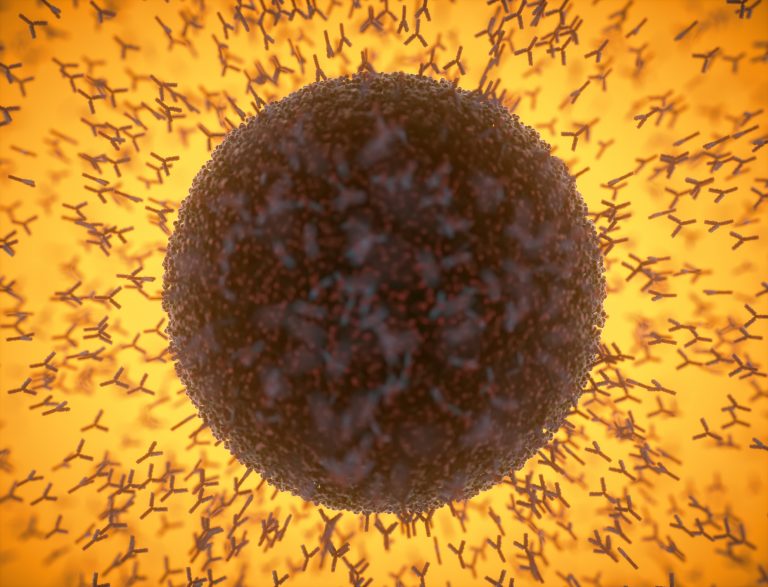
Another piece of the puzzle explaining why some people who contract COVID-19 have milder symptoms than others may have been uncovered by researchers at Howard Hughes Medical Institute. The new study, published in Science Immunology, suggests that people with COVID-19 may experience milder symptoms because CD8+ T cells “remember” previous encounters with seasonal coronaviruses. In this case, these cells are better equipped to mobilize quickly against an infection with SARS-CoV-2. The study also showed that the killer T cells taken from the sickest COVID-19 patients exhibit fewer signs of having had previous run-ins with common-cold-causing coronaviruses.
Discussions about immunity to COVID-19 often center on antibodies. But antibodies are easily fooled, said senior author Mark Davis, PhD, a professor of microbiology and immunology at Stanford University and a Howard Hughes Medical Institute investigator. “Pathogens evolve quickly and ‘learn’ to hide their critical features from our antibodies,” he noted. But T cells recognize pathogens in a different way, and they’re tough to fool.
When a killer T cell is activated, upon recognition of a peptide displayed on a cell’s surface from an invading pathogen (peptide-MHC), it generates memory T cells. These cells persist in the blood and lymph, often for decades, ready to spring into action upon recognition of the same peptide a second time.
To uncover the differences in COVID-19 disease severity, Vamsee Mallajosyula, PhD, postdoctoral fellow in the Davis lab, first confirmed that some portions of SARS-CoV-2’s sequence are effectively identical to analogous portions of one or more of the four widespread common-cold-causing coronavirus strains. Then he assembled a panel of 24 different peptide sequences that were either unique to proteins made by SARS-CoV-2 or are also found on similar proteins made by one or more (or even all) of the seasonal strains.
More specifically, the study reported the development of “an improved multimeric αβ T cell staining reagent platform, with each maxi-ferritin ‘spheromer’ displaying 12 peptide-MHC complexes.” Spheromers, the authors noted, stain specific T cells more efficiently than peptide-MHC tetramers and capture a broader portion of the sequence repertoire for a given peptide-MHC.
The researchers analyzed blood samples taken from healthy donors before the COVID-19 pandemic began, meaning they’d never encountered SARS-CoV-2. That said, many had presumably been exposed to common-cold-causing coronavirus strains. The scientists determined the numbers of T cells targeting each peptide represented in the panel.
They found that unexposed individuals’ killer T cells targeting SARS-CoV-2 peptides that were shared with other coronaviruses were more likely to have proliferated than killer T cells targeting peptides found only on SARS-CoV-2. The T cells targeting those shared peptide sequences had probably previously encountered one or more coronavirus strains—and had proliferated in response, Davis said.
Many of these killer T cells were in “memory” mode, David said. “Memory cells are by far the most active in infectious-disease defense,” he added. “They’re what you want to have in order to fight off a recurring pathogen. They’re what vaccines are meant to generate.”
Killer T cells whose receptors target peptide sequences unique to SARS-CoV-2 must proliferate over several days to get up to speed after exposure to the virus, Davis said. “That lost time can spell the difference between never even noticing you have a disease and dying from it,” he said.
To test this hypothesis, Davis and his colleagues turned to blood samples from COVID-19 patients. They found that COVID-19 patients with milder symptoms had more killer-T memory cells directed at peptides SARS-CoV-2 shared with other coronavirus strains. Sicker patients’ expanded killer T-cell counts were mainly among those T cells typically targeting peptides unique to SARS-CoV-2 and, thus, probably had started from scratch in their response to the virus.
“It may be that patients with severe COVID-19 hadn’t been infected, at least not recently, by gentler coronavirus strains, so they didn’t retain effective memory killer T cells,” Davis said.
Davis noted that cold-causing seasonal coronavirus strains are rampant among children, who rarely develop severe COVID-19 even though they’re just as likely to get infected as adults are. “Sniffles and sneezes typify the daycare setting,” he said, “and coronavirus-caused common colds are a big part of the reason. As many as 80% of kids in the United States get exposed within the first couple of years of life.”













